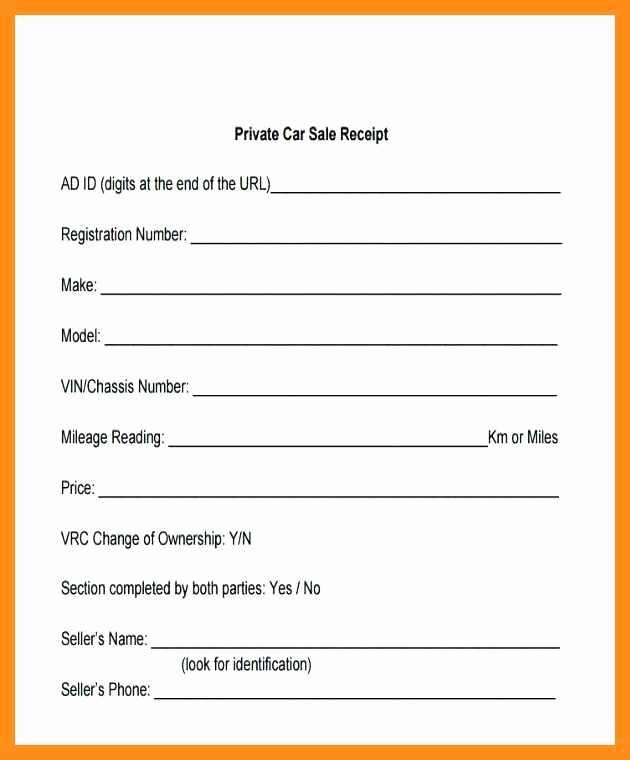
Creating a detailed receipt for a private car sale in Queensland ensures both parties have clear documentation for the transaction. The document should include essential details such as the buyer and seller’s information, the car’s specifications, the agreed-upon price, and the date of sale.
Start by including the full names, addresses, and contact details of both the buyer and the seller. This helps identify the parties involved and serves as a reference in case of any disputes later on. Also, make sure to clearly list the vehicle’s make, model, year, VIN (Vehicle Identification Number), and any other relevant details that describe the car’s condition.
The receipt should include the exact sale price, the payment method (whether it’s cash, bank transfer, or cheque), and a statement confirming that the vehicle was sold “as is” unless otherwise agreed upon. Be sure to add a signature line for both parties to confirm that the transaction has been completed and accepted by both sides.
Lastly, include the date of the sale at the bottom of the document to validate the transaction. Having a properly filled-out receipt protects both parties and ensures that the sale is recognized by the Queensland Department of Transport and Main Roads.
Private Car Sale Receipt Template Queensland
For a smooth private car sale in Queensland, a well-structured receipt is necessary to finalize the transaction and protect both the buyer and seller. Below is a detailed template you can use when selling a vehicle privately:
- Seller’s Full Name and Address: Ensure the seller’s full legal name, residential address, and contact details are clearly listed.
- Buyer’s Full Name and Address: Include the buyer’s legal name, residential address, and contact details.
- Vehicle Information: Specify the make, model, year, Vehicle Identification Number (VIN), registration number, and odometer reading at the time of sale.
- Sale Price: Clearly state the agreed-upon sale price in Australian dollars (AUD).
- Date of Sale: Indicate the exact date the sale took place.
- Payment Method: Mention how the payment was made (e.g., bank transfer, cash, cheque).
- Condition of Vehicle: Include a statement regarding the condition of the vehicle, whether it’s “as is” or if any warranties are offered.
- Signatures: Both the seller and buyer must sign the receipt to confirm the agreement. Date and location of the signature should also be noted.
This receipt serves as a record of the transaction and ensures both parties are clear on the terms of the sale. Keep a copy for your own records, and provide one to the buyer for their reference. This document can also be useful if any legal issues arise after the sale.
How to Create a Legally Compliant Receipt for Private Car Sales
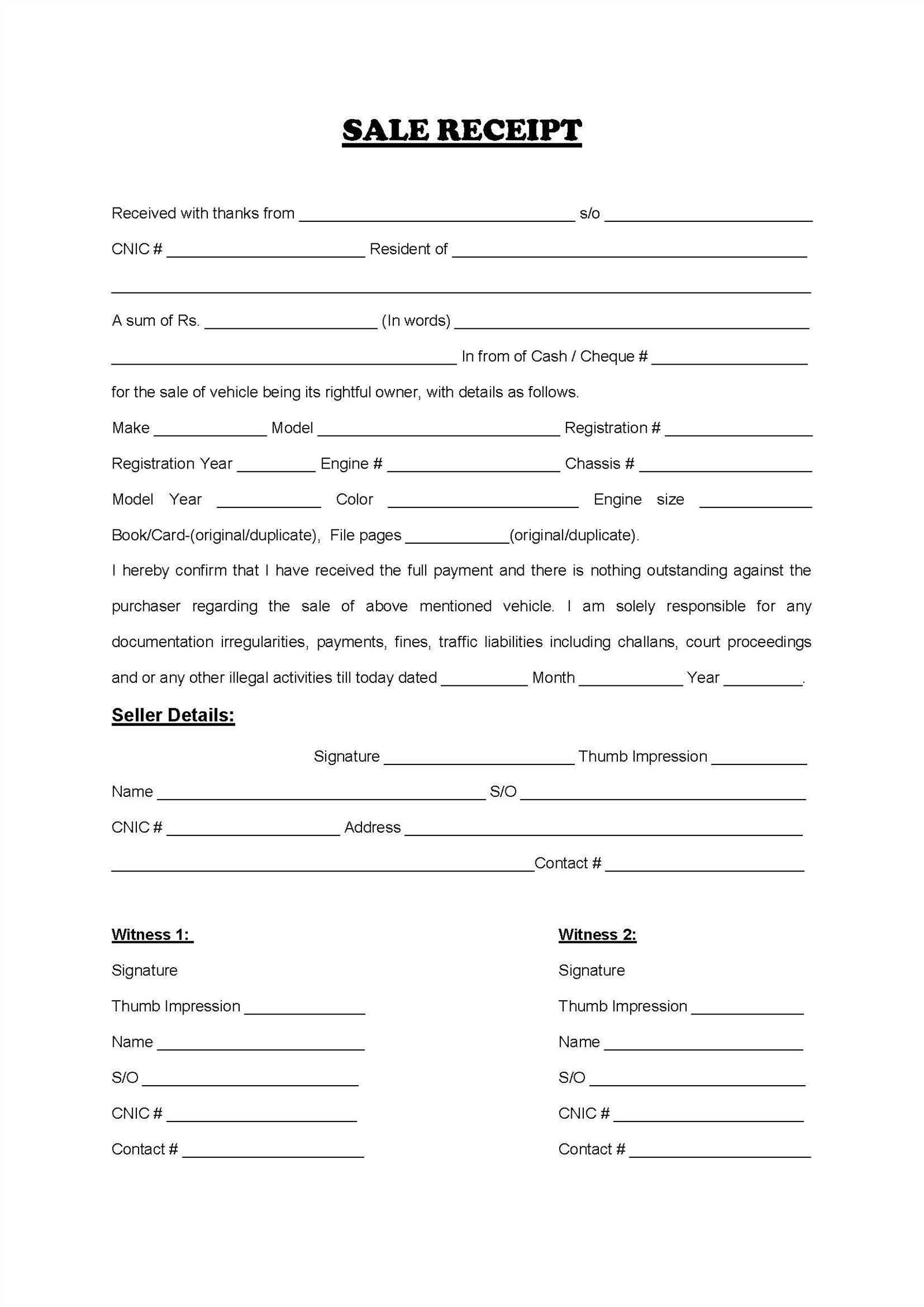
Begin by clearly stating the full names and addresses of both the buyer and the seller. Include any other relevant identifying details such as driver’s license numbers or ABNs for the seller.
Detail the car’s make, model, year of manufacture, Vehicle Identification Number (VIN), odometer reading, and any other distinguishing characteristics. This ensures both parties are clear on the exact vehicle being sold.
Include the sale date and the total sale amount. Make sure the receipt clearly states whether the transaction is inclusive or exclusive of taxes, such as GST, if applicable.
Note the payment method–whether it’s cash, bank transfer, or another form. If the buyer has made a partial payment, document the amount paid upfront and the remaining balance if any.
Include a statement that the vehicle is sold “as is,” without any warranties unless otherwise agreed upon. This protects the seller in case issues arise after the sale.
If the sale involves a trade-in vehicle, outline the details of that vehicle as well. Mention the trade-in amount and adjust the final sale price accordingly.
Both parties should sign the receipt to confirm their agreement to the terms. This makes the document legally binding.
Keep a copy of the receipt for your records. The buyer should also be given a copy for their reference.
Important Details to Include for Registration Transfer in Queensland
Include the vehicle’s VIN (Vehicle Identification Number) clearly on the document. This number helps verify the identity of the vehicle and ensures the registration transfer is processed smoothly.
Provide the current registration details, such as the registration number, expiry date, and the name of the current registered owner. These details ensure that the transfer is linked to the correct vehicle and owner.
Both the seller’s and buyer’s personal details must be included. This includes full names, addresses, and contact information for both parties to verify the transaction and prevent any potential disputes in the future.
Record the sale price or agreed amount for the vehicle. This information is necessary for tax purposes and ensures that the transfer reflects the correct value for registration fees and any potential stamp duties.
The signature of the seller is required to confirm the transaction. The buyer should also sign to acknowledge the transfer of ownership and registration responsibilities.
Don’t forget to include the date of sale. This is crucial for calculating any remaining registration time or refunds, and for ensuring the correct timeline is reflected in official records.
Common Mistakes to Avoid When Filling Out a Car Sale Receipt
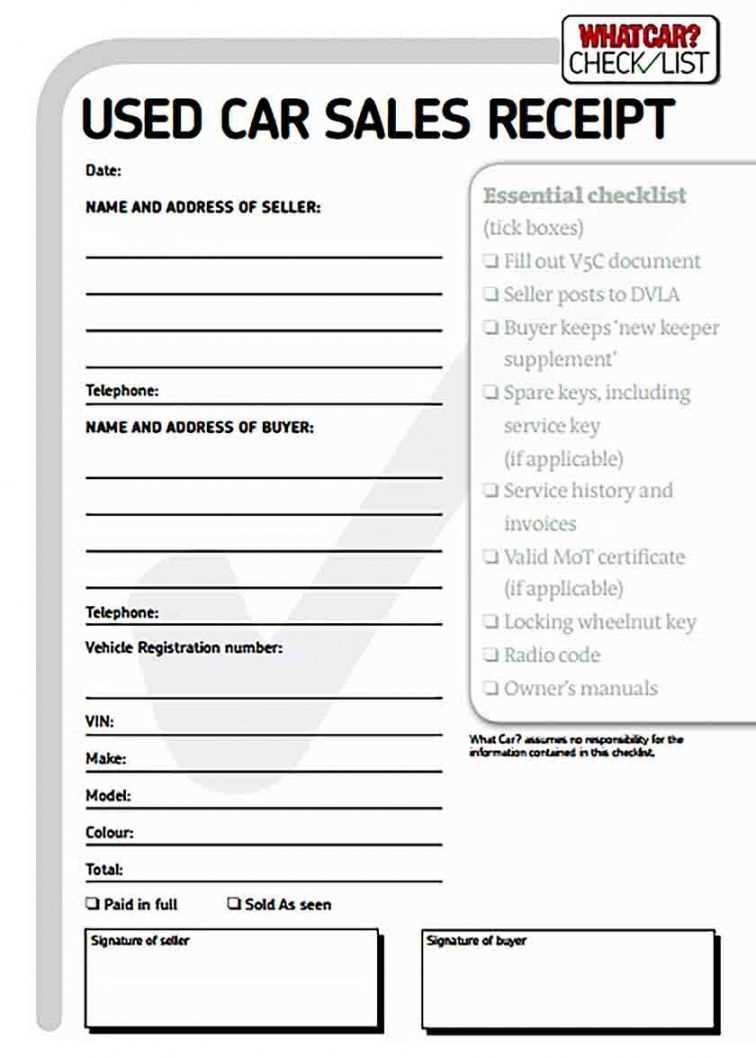
One common mistake is leaving out the Vehicle Identification Number (VIN). Double-check this number to ensure it’s accurate, as it helps uniquely identify the vehicle and is crucial for legal and registration purposes.
Another frequent issue is not including the correct sale price. It should reflect the agreed-upon amount, including any additional costs such as taxes or registration fees. Omitting these details can lead to confusion and disputes later on.
Incorrect Seller and Buyer Information
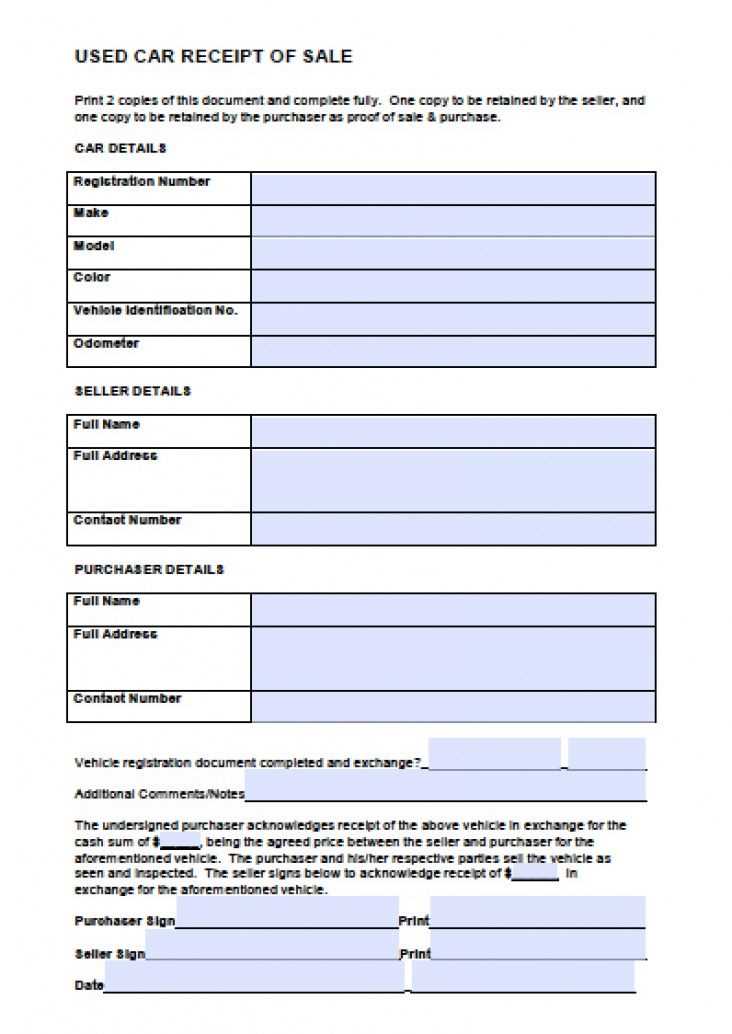
Ensure that both parties’ full names, addresses, and contact information are clearly listed. Misspellings or missing details can cause problems with ownership transfer or lead to issues during registration.
Failing to Include Signatures
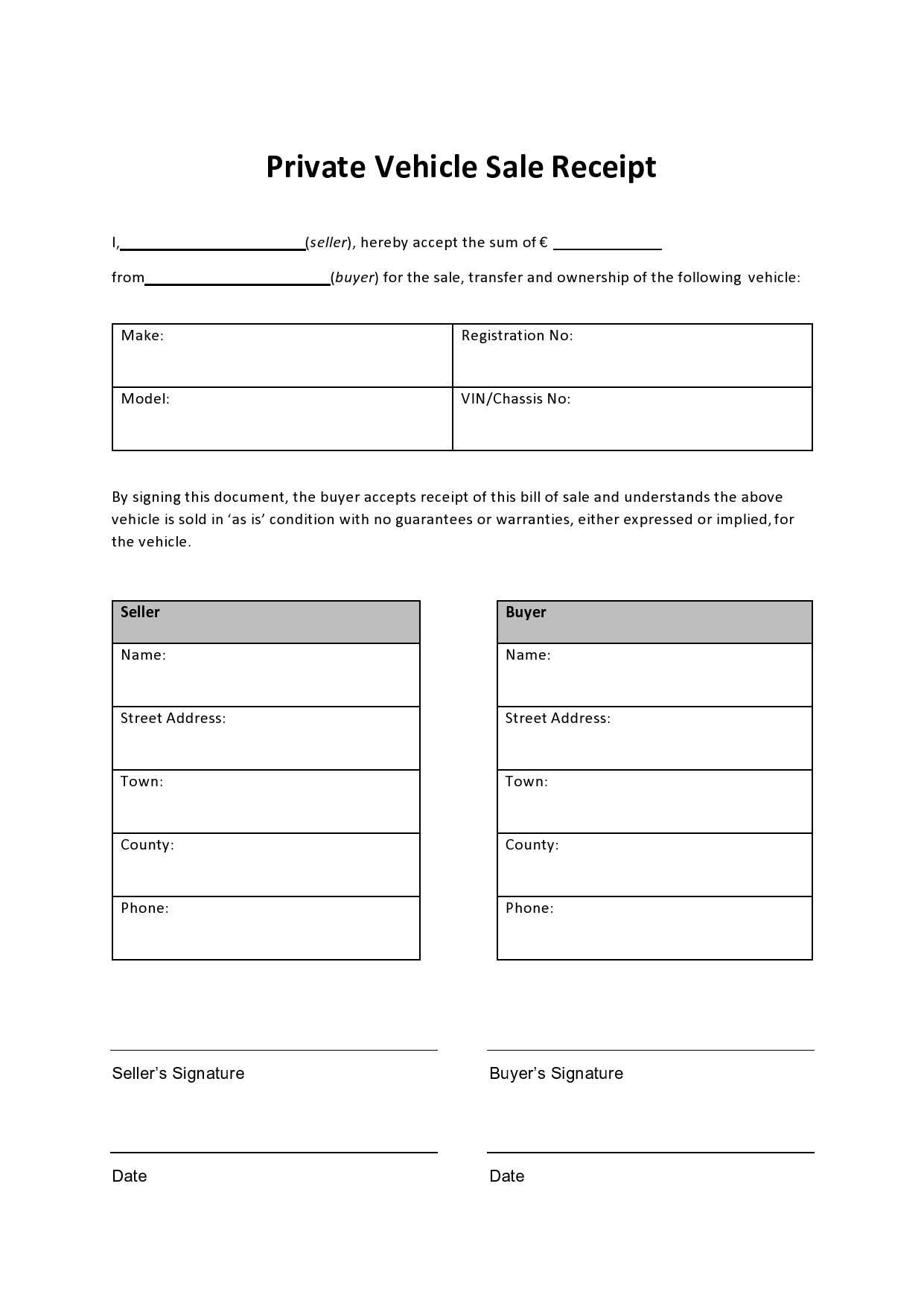
Always have both the seller and buyer sign the receipt. Without signatures, the document lacks validity, and the transaction may not be legally recognized.


